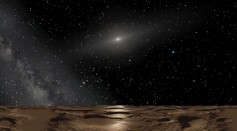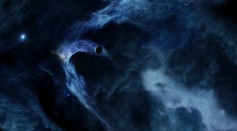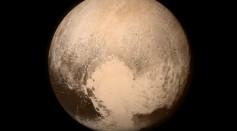Kuiper Belt
Exploring the Outer Limits: Where Does Our Solar System End?
Kuiper Belt Object Arrokoth Has More Similarities to a Snowman Aside From Their Shape
New Horizons Reveals Extended Kuiper Belt, Challenging Previous Solar System Boundaries

NASA's New Horizons Found a Dozen Large Objects Beyond the Kuiper Belt's Outer Boundary

Planet Nine or Not? Earth-Like World Could Be Lurking Around the Solar System, Scientists Say
What Happened to Pluto? Why Is It No Longer a Planet but Has Become a World?
New Planet 9 Theory: Earth-Like Body Drifted and Hid in the Outskirts of Solar System
Solar System Estimated to Be Much Younger at 4.55 Billion Years Based on Magnetism Analysis

Unsolved Mystery: Scientists are Still Debating Whether Pluto is a Planet or Not
Hubble Discovers a Moon Around the Third Largest Dwarf Planet
NASA Update: New Horizons Spacecraft Headed Halfway Towards The Kuiper Belt For Its Next Flyby Mission To 2014 MU69
New Planets Hiding In the Shadow of Pluto
New Study Reveals Prospective Planets Just Beyond Pluto—And There May Be More Than One
Most Popular

How Technology Is Changing the Real Estate Industry?

Study Reveals High Turnover in Scientific Research Careers: What This Means for Future Scientists

How a Plant-Based Diet Can Protect Against Breast Cancer: Insights from Nutrition Research

Practical Steps to Future-Proof Your Money to Create Financial Security





